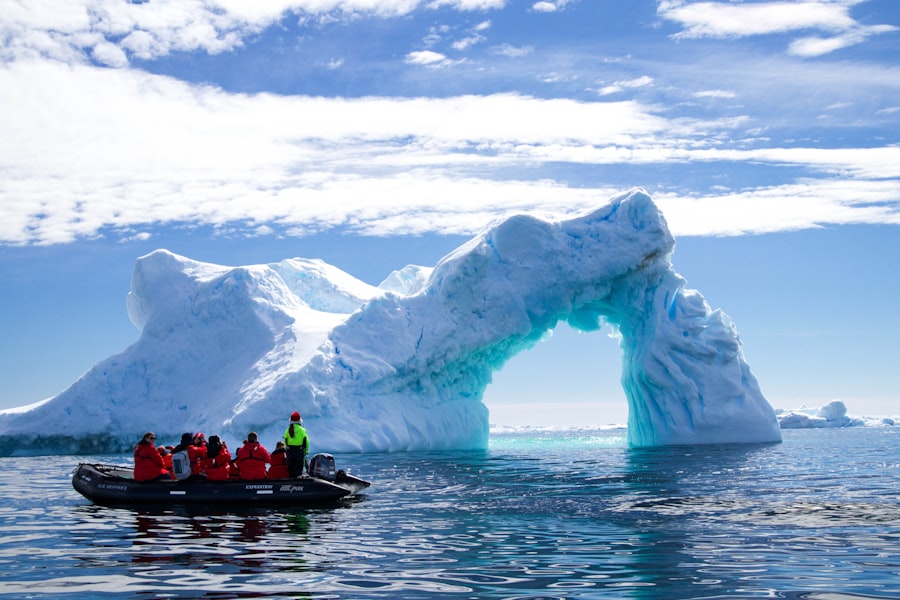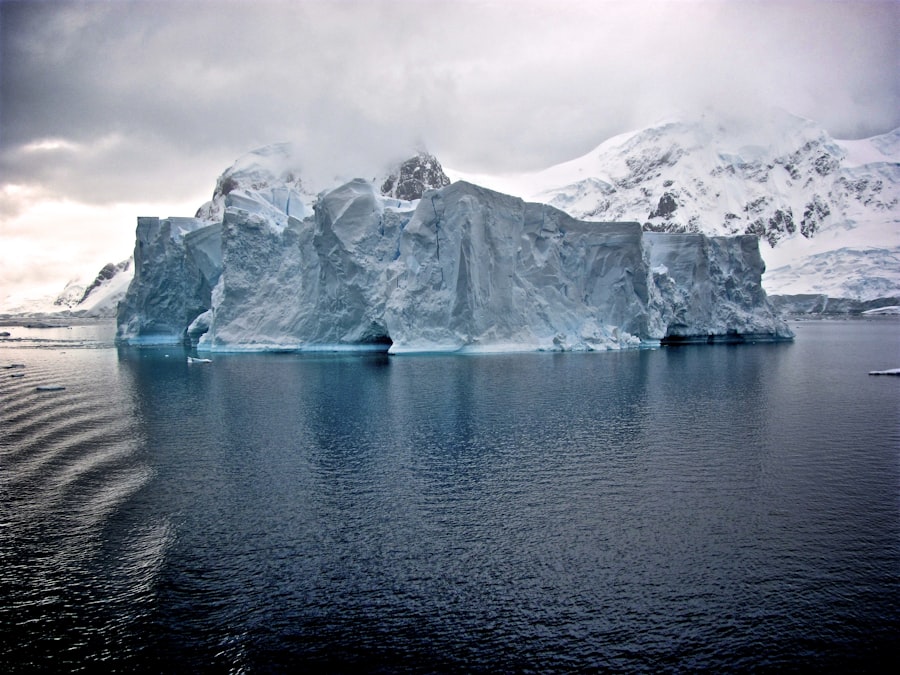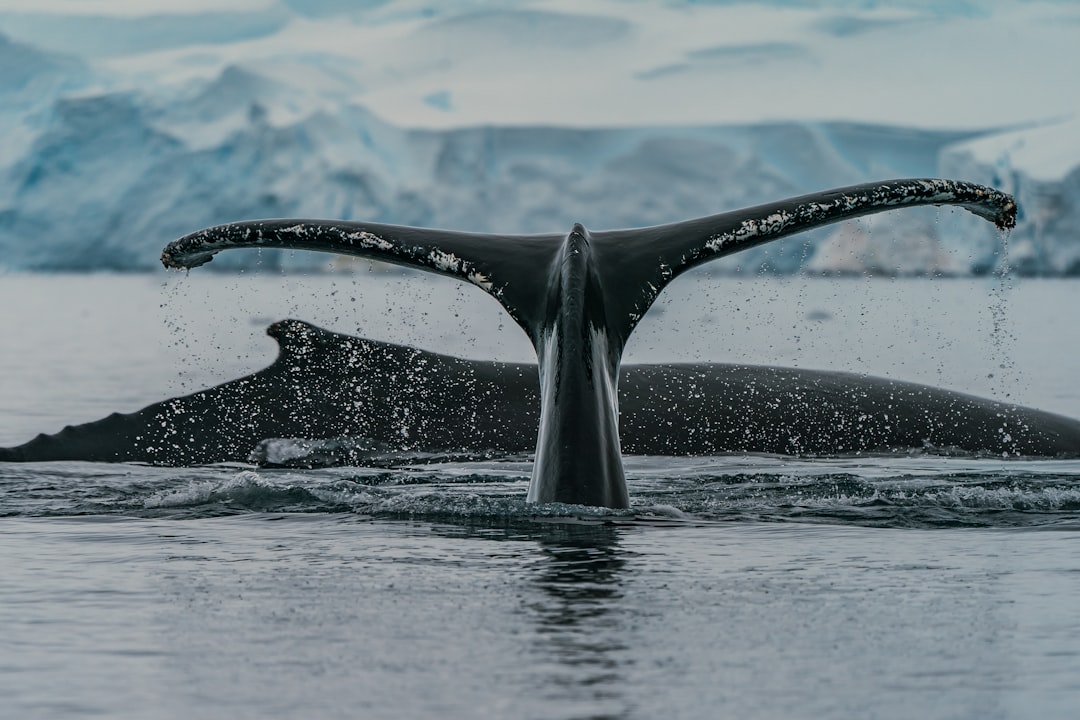The Drake Passage, a body of water situated between the southern tip of South America and Antarctica, is renowned for its tumultuous seas and unpredictable weather. Named after the English explorer Sir Francis Drake, who navigated these waters in the late 16th century, the passage is often regarded as one of the most challenging maritime routes in the world. Stretching approximately 600 miles, it serves as a critical gateway for vessels traveling to and from Antarctica.
The passage is characterized by its strong currents and high winds, which can create rough seas that test even the most seasoned sailors. For many adventurers and researchers, crossing the Drake Passage is a rite of passage, a necessary challenge that adds to the allure of visiting Antarctica.
The unpredictable nature of the waters can lead to seasickness and discomfort for passengers, making it essential for travelers to prepare adequately. Despite these challenges, the Drake Passage remains a vital route for those seeking to explore the pristine landscapes and unique wildlife of Antarctica, drawing thousands of tourists and scientists each year.
Key Takeaways
- The Drake Passage is a notoriously rough stretch of water between South America and Antarctica, known for its challenging sailing conditions.
- Alternative routes to Antarctica include crossing the Southern Ocean from South Africa, flying directly to Antarctica, and sailing from the Falkland Islands.
- Traveling to Antarctica from South America is a popular option, with departures from Chile and Argentina.
- Exploring Antarctica from Australia and New Zealand offers a unique perspective and access to different regions of the continent.
- Cruising to Antarctica from South Africa provides a different route and the opportunity to visit other destinations along the way.
Alternative routes to Antarctica
While the Drake Passage is the most commonly traveled route to Antarctica, several alternative paths exist that can provide a more comfortable journey. These alternatives often cater to those who may be apprehensive about the rough seas associated with the Drake Passage. One such option is to embark on a cruise that departs from Ushuaia, Argentina, but takes a longer route around the continent, allowing travelers to avoid the worst of the turbulent waters.
This route may take additional days but can offer a smoother sailing experience. Another alternative involves traveling via air to research stations or specific landing sites on the Antarctic Peninsula. This method allows travelers to bypass the Drake Passage entirely, providing a more direct route to the icy continent.
While flying may limit some of the scenic views that come with a sea voyage, it offers an efficient way to reach Antarctica for those with time constraints or concerns about sea conditions. These alternative routes have gained popularity among travelers seeking to experience the wonders of Antarctica without enduring the challenges of the Drake Passage.
Crossing the Southern Ocean

The Southern Ocean, which encircles Antarctica, is known for its frigid temperatures and powerful storms. Crossing this vast expanse can be an exhilarating experience for those who embrace adventure. The Southern Ocean is home to diverse marine life, including whales, seals, and various seabirds, making it a fascinating area for wildlife enthusiasts.
As vessels navigate these waters, passengers often have the opportunity to witness these creatures in their natural habitat, adding an element of excitement to the journey. However, crossing the Southern Ocean also requires careful planning and preparation. The weather can change rapidly, and travelers must be equipped for cold temperatures and potential rough seas.
Many cruise operators provide detailed briefings on what to expect during the crossing, ensuring that passengers are well-informed and ready for any challenges that may arise. For those willing to brave the elements, crossing the Southern Ocean can be a memorable part of their Antarctic adventure.
Traveling to Antarctica from South America
| Aspect | Information |
|---|---|
| Distance | Approximately 1000 miles from the southern tip of South America to the Antarctic Peninsula |
| Transportation | Options include cruise ships, expedition vessels, and flights to research stations |
| Duration | Typically takes 2-3 days by ship, or a few hours by plane |
| Weather | Extreme cold temperatures and harsh weather conditions, with average summer temperatures around 0°C (32°F) |
| Activities | Opportunities for wildlife viewing, glacier exploration, and scientific research |
Traveling to Antarctica from South America is one of the most popular options for adventurers seeking to explore this remote continent. Ushuaia, located at the southernmost tip of Argentina, serves as a primary departure point for many Antarctic cruises. This bustling port city offers various amenities and services for travelers preparing for their journey.
From Ushuaia, vessels typically set sail across the Beagle Channel before entering the Drake Passage, marking the beginning of their Antarctic expedition. The journey from South America allows travelers to immerse themselves in the rich culture and stunning landscapes of Patagonia before heading southward. Many cruise operators offer pre-expedition tours that include visits to national parks, wildlife watching excursions, and opportunities to experience local cuisine.
This combination of experiences enhances the overall adventure, allowing travelers to appreciate both the beauty of South America and the allure of Antarctica.
Exploring Antarctica from Australia and New Zealand
Australia and New Zealand also serve as gateways to Antarctica, offering unique opportunities for exploration.
These cruises often focus on specific areas like East Antarctica or sub-Antarctic islands, allowing travelers to experience diverse landscapes and wildlife.
Travelers embarking on journeys from Australia or New Zealand may find that these routes offer a different perspective on Antarctica’s beauty. The voyages often include stops at remote islands teeming with wildlife, such as Macquarie Island or Campbell Island. These locations provide opportunities for birdwatching and observing unique ecosystems that thrive in harsh conditions.
For those seeking a more varied Antarctic experience, exploring from Australia or New Zealand can be an enriching choice.
Cruising to Antarctica from South Africa

South Africa presents another intriguing option for those wishing to visit Antarctica. While less common than routes from South America or Australia, cruises departing from Cape Town offer a unique perspective on this icy continent. These voyages typically take longer due to the distance involved but can provide an unforgettable experience for those willing to embark on an extended journey.
Cruising from South Africa allows travelers to explore not only Antarctica but also other fascinating destinations along the way. Many itineraries include stops at sub-Antarctic islands such as Marion Island or Prince Edward Island, where visitors can witness incredible wildlife and stunning landscapes. The combination of diverse locations makes this route appealing for those looking to maximize their adventure while experiencing the beauty of both land and sea.
Flying to Antarctica
Flying to Antarctica has become an increasingly popular option for travelers seeking a more direct route to this remote destination. Several tour operators offer flights that transport passengers directly to research stations or designated landing sites on the Antarctic Peninsula. This method allows travelers to bypass lengthy sea voyages while still experiencing the breathtaking landscapes and unique wildlife that Antarctica has to offer.
Flying into Antarctica provides an opportunity for visitors to spend more time exploring rather than enduring long travel times at sea. Many flights are designed to coincide with guided tours or expeditions once passengers arrive on the continent. This arrangement allows travelers to engage in activities such as hiking, kayaking, or wildlife watching without having to navigate rough seas first.
For those with limited time or who prefer not to sail through turbulent waters, flying offers a convenient alternative.
Sailing to Antarctica from the Falkland Islands
The Falkland Islands serve as another launching point for adventurous souls eager to explore Antarctica. Located about 300 miles from the Antarctic Peninsula, these islands provide a unique opportunity for travelers looking for a different maritime experience. Sailing from the Falkland Islands allows passengers to enjoy a more leisurely journey while taking in stunning ocean views and potential wildlife sightings along the way.
Cruises departing from the Falkland Islands often include opportunities for land excursions on both the islands and in Antarctica itself. Travelers can explore rugged landscapes, observe diverse bird species, and learn about the rich history of this remote region. The combination of sailing and exploration makes this route appealing for those seeking a comprehensive Antarctic experience while enjoying a more relaxed pace.
The benefits of avoiding the Drake Passage
Avoiding the Drake Passage can offer several advantages for travelers heading to Antarctica. One of the most significant benefits is a smoother sailing experience, which can greatly enhance comfort levels during transit. For individuals prone to seasickness or those who simply prefer calmer waters, alternative routes provide an appealing solution that allows them to enjoy their journey without discomfort.
Additionally, bypassing the Drake Passage can lead to increased time spent exploring Antarctica itself. By choosing air travel or alternative maritime routes, travelers can maximize their time on land engaging in activities such as wildlife watching or photography rather than enduring lengthy sea crossings. This focus on exploration rather than transit can make for a more fulfilling overall experience.
Considerations for choosing an alternative route
When considering alternative routes to Antarctica, several factors come into play that travelers should carefully evaluate. First and foremost is personal comfort; individuals who are apprehensive about rough seas may prioritize options that minimize exposure to turbulent waters. Additionally, travel time and budget are crucial considerations; some alternative routes may be more expensive or take longer than traditional options.
Travelers should also consider their specific interests when selecting a route. Those eager to see particular wildlife or landscapes may find certain itineraries more appealing than others based on their desired experiences. Researching various cruise operators and itineraries can help ensure that travelers choose a route that aligns with their interests while providing an enjoyable journey.
Making the most of your journey to Antarctica
Embarking on a journey to Antarctica is an extraordinary adventure that promises unforgettable experiences and breathtaking landscapes. Whether one chooses to brave the Drake Passage or opt for alternative routes, careful planning and consideration can enhance this once-in-a-lifetime trip. By exploring various travel options—from cruises departing from South America or Australia to flights directly into research stations—travelers can tailor their experiences based on personal preferences and comfort levels.
Ultimately, making informed choices about travel routes allows adventurers to focus on what truly matters: immersing themselves in the stunning beauty of Antarctica and witnessing its unique wildlife up close. With proper preparation and an open mind, every traveler can make the most of their journey to this remarkable continent, creating memories that will last a lifetime.
If you’re planning a trip to Antarctica and want to avoid the notoriously rough waters of the Drake Passage, there are alternative routes to consider. One such option is flying directly to the continent, which allows you to bypass the Drake Passage entirely. For more detailed information on this topic, you can explore a related article on MyGeoQuest. This article provides insights into various travel routes and tips for reaching Antarctica without having to endure the challenging sea crossing. Check it out here:
